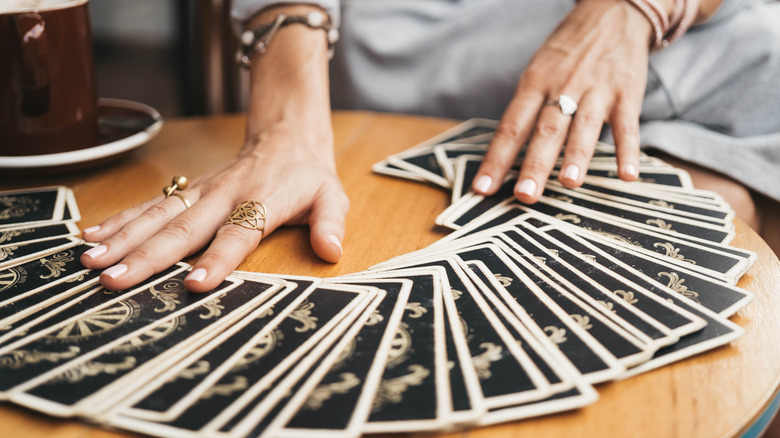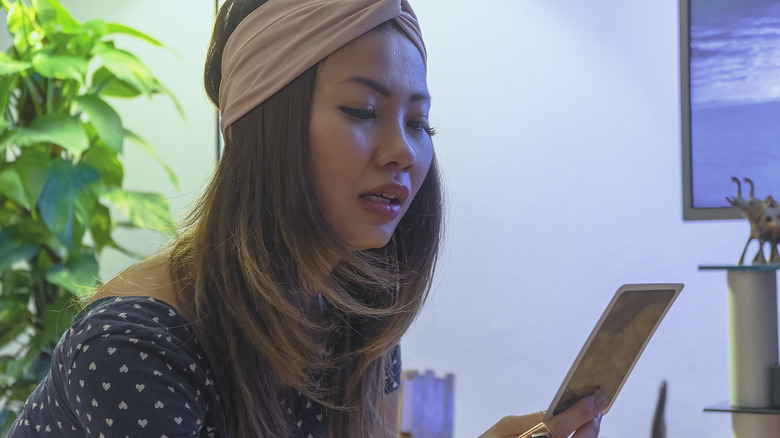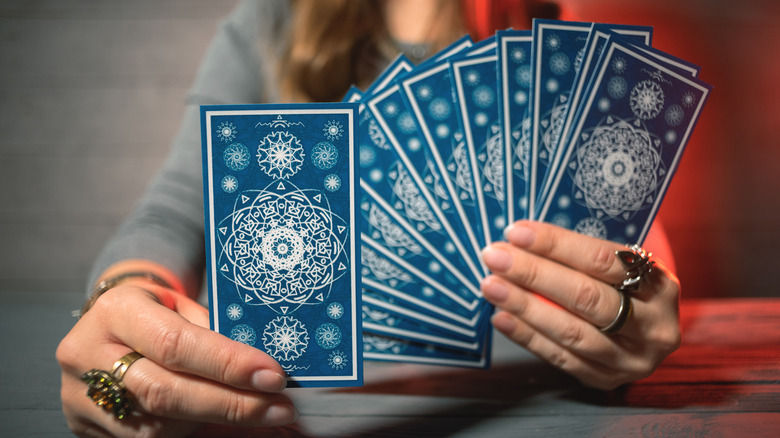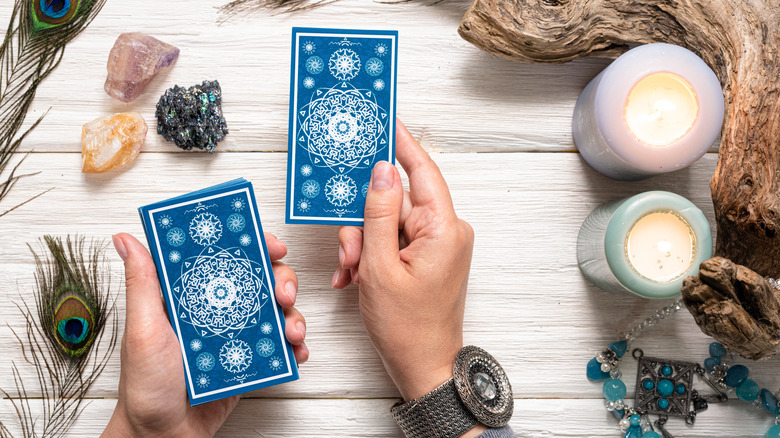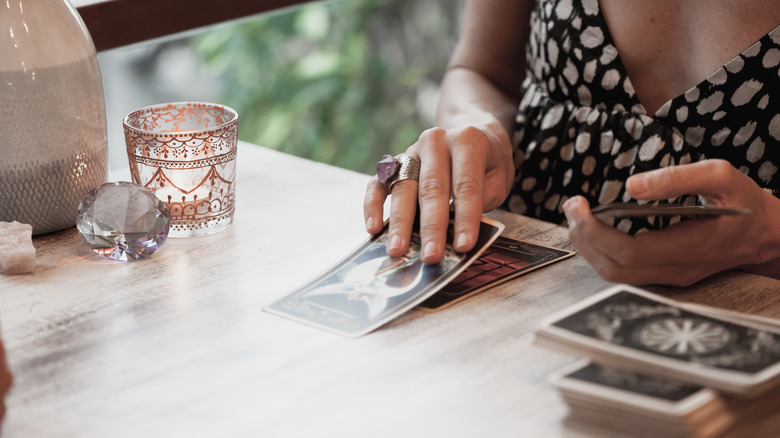One Card Tarot Reading: What Is It And How Does It Work?
Receiving simple answers to some of life's biggest questions regarding love, career, and the future often seems like mere pipe dreams, but a one-card tarot reading can bring clarity, direction, and encouragement on these momentous topics, plus smaller subjects, with the use of a quick and easy practice.
Tarot cards date back centuries, if not millenia, with roots in ancient civilizations. The most commonly used tarot deck in Western society consists of 78 cards, with 22 of them describing major aspects of life and the remaining 56 cards pertaining to topics of smaller proportions. The two groups of cards are termed major arcana cards and minor arcana cards, respectively. Contrary to misconception, tarot readings are about gaining personal insight rather than connecting with mystical realms.
Tarot cards are used as a guide for connecting with one's innermost self, discovering deeply held truths and developing an evolved awareness of both practical life and divine elements in whatever form of divinity in which a user believes. This indicates that tarot is for anyone and everyone who wants to learn more about themselves and the greater world, tangible and spiritual. A one tarot card reading can be beneficial for avid tarot enthusiasts and novices alike, including those who have never even seen a tarot deck before. So, if you've never had a tarot reading before, don't let that discourage you from the wisdom brought about by a one-card reading. We are here to serve as your guide.
The foundation of a single-card tarot reading
For a variety of experiences and internal questions living rent-free in your mind, your solution may be found in a single tarot card pull. A one-card tarot reading is a hassle-free way to feel empowered, confident, and capable of tackling even the most daunting situations. The benefits of one-card readings include brevity of time, as they take no more than a few minutes to conduct the practice, and lack of clutter since all that's required is a tarot deck — a virtual deck works, too — and you're only presented with a single topic in which to focus on. One-card tarot readings can be done by oneself, so you don't have to visit a trained tarot practitioner to benefit from the practice of a single-card pull, thus making the process even easier than other methods of tarot readings.
The foundation of the one-card tarot assessment is to help provide you with direction for dealing with a particularly difficult event, situation, or relationship dynamic in your life. Rather than having numerous cards, each indicating different facets reflecting your innermost considerations, sole-card readings provide straightforward, single-focused direction for your current inquiry. Guidance given by one-card readings can proffer a suggested direction of your efforts that is as simplistic as the practice of pulling and reading a single card itself, eliminating unnecessary and compounding stress.
Types of one-card tarot reading practices
Before you dive into a one-card tarot reading, it's key to differentiate between single-card pulls, a.k.a. one-card tarot readings, and daily single-card readings. Though the terminology is similar and can be confusing when first learning about the insights provided by tarot readings, there are clear distinctions between the two tarot practices hallmarked by seeking meaning from lone cards. A daily single-card tarot reading is a practice performed regularly with continuity of the direction provided by cards pulled across days, providing cumulative and ongoing guidance for working through various facets of daily life. Having a daily tarot practice can be introspective and help you connect with yourself in unprecedented ways. Though singular-card readings mimic the practice of one-card tarot readings, the consistency of pursuing one's innermost truths pertaining to experiences over time, rather than a one-time pursuit of direction, trademarks daily single-card readings.
In contrast, the motivation for undertaking a single-card tarot reading is for one-time truth seeking. When a specific issue is weighing on you, from a financial concern to a relationship conflict or a hurdle at work, this is the prime time for seeking the assistance of a one-card reading. The practice can be conducted as often as you'd like, though a core component of single-card readings is having clarity of your intentions for seeking direction from the tarot deck.
Spend time connecting with your intentions
When you're in need of assistance for overcoming an obstacle, particularly when struggling to know how to proceed or under a time crunch, quickly pulling a tarot card for expedited guidance can be tempting. Although this approach can certainly be used if you're in a haste, you'll receive the best results and optimal insight into your current dilemma if you spend time beforehand reflecting on your underlying reasons for the reading. Without dedicating time to self-reflection of your motivations and hopes for the reading, you'll risk dampening the deck's guidance since clarity of your intentions is often needed to fully realize the given card's relevance to your current experience.
Intentions are the underlying reasons and motivations for undertaking endeavors. Being attuned to your intentions can boost focus and hone attention towards fulfilling the aims of your intentions. Intentions are relevant for nearly every area of life, as they typically center around developing desired qualities or strengthening specific lifestyle habits, including interpersonal communication and wellness measures. In the purview of single-card readings, intentions are the underlying reasons why wisdom from the tarot deck is sought. Using introspective techniques such as journaling, meditation, and mindfulness activities can provide calm, quiet space for peering inward and listening to your inner voice, discerning your motivations for pursuing a one-card reading. After pulling the single card, having defined intentions will help you align the card's message with your inner motivations.
Guide yourself through the process by preparing parameters
Prior to conducting a one-card reading, you can enhance the experience by creating guidelines and having support aids in place to help you maintain your focus in alignment with your intentions for the reading. Understand that the foundation of one-card readings is to proffer a sense of direction for handling difficult experiences, not for transpiring instantaneous solutions. Reminding yourself of this by reciting a mantra is beneficial for remaining grounded. It's advisable to determine how you can support yourself should you find you've set unrealistic expectations for the reading or feel disappointed by the card you pull. It can be helpful to write out visual cues following prompts with reminders that the practice is intended to strengthen trust of your innermost self and intuition. Additional preparations of pre-reading can include placing your written intentions nearby as a visual aid and curating a self-care strategy to have in place before, during, and after the reading.
Should you find yourself overwhelmed following the reading, or if the experience driving your use of the one-card reading is accompanied by intense emotions, reach out to your support network of friends, family, and fellow tarot community. At its core, tarot cards are about helping us discover the depth of our existence and understand our connections with the external world — a.k.a., tarot is about being human — making emotional reactions to readings a normal experience and seeking support from others an equally encouraged engagement.
Embrace an earnest exploration of your inquiry
The next step for a quality single-card reading is focusing your attention and energy inward in pursuit of articulating a concise question to answer during the reading. As you ponder potential questions, channel your curiosity towards internal investigations of how you can strengthen your depth of connection with yourself, then consider how the message of the singular tarot card can provide guidance towards authentic personal growth. This core question is essentially the thesis of your intentions for the reading.
You're likely to achieve maximum inspiration from a one-card reading if your question emphasizes achieving better understanding of yourself, including behaviors, desires, and personal growth goals. If this sounds familiar, it's because the focus of this step follows the same principles of seeking introspection for setting intentions. Since tarot cards are unable to predict the future or manipulate outcomes of situations, the most effective use of the deck is for learning about yourself in ways previously unexplored. Examples of internally-focused questions include "How can I decrease my extraneous spending?" and "What can I learn from past experiences or relationships?"
After imagining your desired outcome for your situation, the personal insights you glean may be uncomfortable to sit with, especially if they pertain to your vulnerabilities or insecurities. Rather than shy away, use the wisdom of the one-card reading to help you conquer feelings of discomfort and regain control of situations, experiences, dynamics, or even your perception of yourself.
Reflect on the card through creative mindfulness means
Now it's time for the main act to take the stage: the physical selection from a tarot deck for a one-card reading. There's no correct way to perform a single-card pull, though many advise connecting with your intuition and selecting the card to which you're most energetically drawn. When the card is in your hand, you may choose to hold it upright for eye-level viewing or lay it flat on the surface in front of you.
Invoke creativity in reading the card, and funnel your focus to the element of the card with which you feel the most connected. Since tarot readings are founded on expanding self-connection, you can bring into your reflection of the singular card other methods of self-discovery, such as color numerology and color-based personality interpretations by isolating your focus to a specific color or detail within your selected tarot card.
Using these colorful, detailed facets of the card, you can transition your reflection of the lone card's meaning into a visual meditation practice, wherein your meditative attention becomes focused on picturing colors or details found within the card, or the card in its entirety can be visualized for a comprehensive reflection of its interpretation of your intentions and core inquiry for the reading. Spending time learning how to derive mentorship from a tarot deck can lead to meaningful outcomes in other areas of your life by encouraging the refinement of mindfulness habits.
Establishing tarot reading rituals which feel fitting
If you find inspiration or positive benefit from your one-card tarot reading, you might explore incorporating a regular routine of readings into your life in the capacity that fits your schedule and feels right for you. The foundation of tarot is personal, so establishing a card reading ritual should be just as individually tailored and personalized without influence from anyone but your innermost self. Performing your own tarot readings, particularly one-card readings, is an excellent way to familiarize yourself with the various cards in your tarot deck and the many ways each individual card can be interpreted. To avoid becoming overwhelmed as a novice to tarot and to capitalize the absorption of newfound interpretations, recommendations adhere to pulling no more than three cards at a time.
One-card tarot readings are useful for deciphering extraneous experiences or anomalous situations. Conversely, if you want a daily practice, consider a single daily pull, expand your tarot horizons to a variety of spreads by using the full deck of 78 cards, or hone the emphasis of your readings onto pulling from the major or minor arcana subsets in correlation with the type of experience you're presently trying to insightfully interpret.
Single-card readings can be performed at any time, but, for regular tarot practices, recommendations suggest pulling cards as part of either your morning or evening routine. To enhance reflection, keep a journal of your tarot journey.
